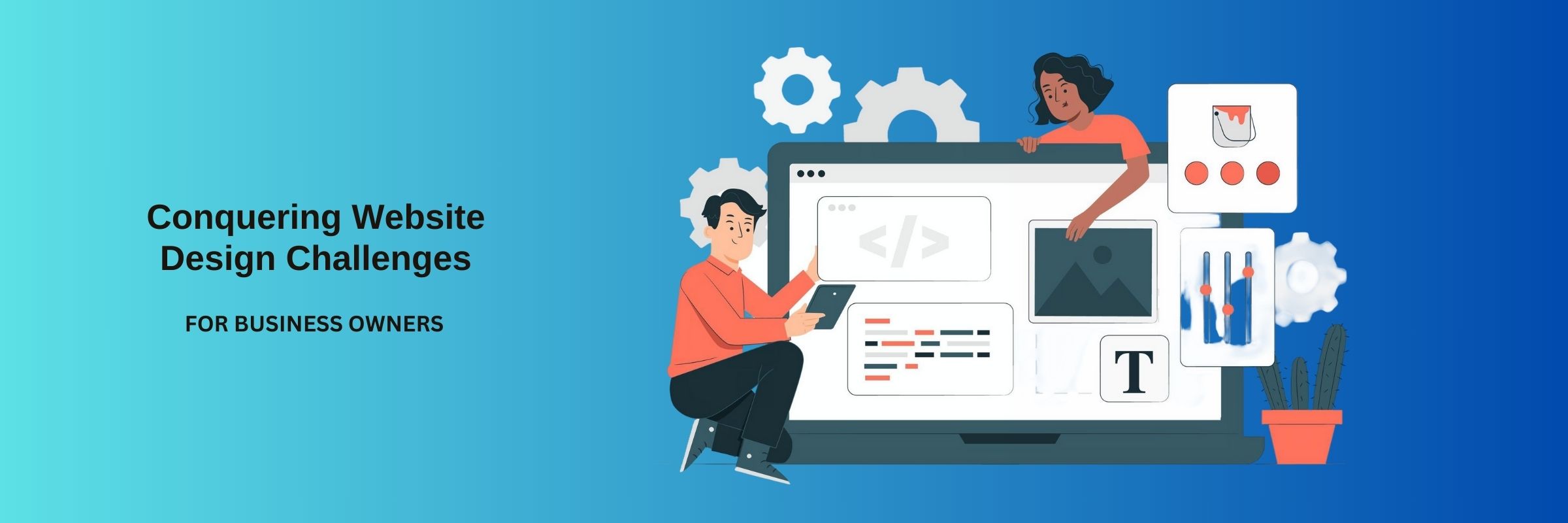
Conquering Website Challenges: An Expert Guide for Business Owners
Explore the top 14 challenges most websites face and how solving them can elevate user experience, security, SEO, and conversions.
- .

In today’s competitive digital landscape, your website is more than an online presence—it’s the beating heart of your business. Yet, countless companies struggle with underperforming websites that repel users instead of converting them. The reality? A great-looking website isn’t enough. It must be functional, secure, engaging, fast, and conversion-focused.
With over two decades of experience in web and mobile app development, ZITS has helped businesses across industries transform sluggish, insecure, and ineffective websites into high-performing digital assets. This blog explores the 14 most common reasons websites underperform—and more importantly, how fixing them can significantly enhance growth, trust, and revenue.
Fixing the 14 most common reasons websites underperform
1. Are Your Security Measures Up to Date?
Why It Matters: Cyberattacks strike every 39 seconds. With small businesses being prime targets (43% of breaches), weak security can damage your brand, leak sensitive data, and incur legal or financial consequences. A secure site builds trust, safeguards user data, and prevents devastating disruptions.
Solution:
- Keep CMS, plugins, and themes regularly updated.
- Install SSL certificates to encrypt sensitive data.
- Conduct regular vulnerability assessments and penetration tests.
- Automate backups for disaster recovery.
2. Is Your Website Performance Driving Users Away?
Why It Matters: 47% of users expect a page to load within 2 seconds. Slow websites frustrate visitors, increase bounce rates, and kill conversions. Performance directly impacts user satisfaction and Google rankings.
Solution:
- Compress and optimize images.
- Use CDNs to accelerate content delivery.
- Implement browser/server caching.
- Reduce unnecessary scripts and HTTP requests.
3. How Fresh is Your Content?
Why It Matters: Outdated content signals stagnation and can reduce both trust and search engine visibility. Dynamic, timely content attracts search engines and keeps users engaged.
Solution:
- Use a content calendar for regular updates.
- Leverage a robust CMS for easier publishing.
- Include user-generated content like reviews or comments.
4. Is Your SEO Strategy Effective?
Why It Matters: 75% of users never scroll past the first search page. A poorly optimized website stays hidden from potential customers, limiting your growth and reach.
Solution:
- Conduct detailed keyword research.
- Create authoritative, relevant content.
- Optimize meta tags, headers, and image alt texts.
- Build high-quality backlinks strategically.
5. Are You Enhancing User Experience (UX)?
Why It Matters: 88% of users won’t return after a bad site experience. Poor UX causes lost leads, frustrated users, and damaged brand perception.
Solution:
- Ensure responsive design across all devices.
- Run usability tests to identify friction points.
- Use compelling CTAs to guide visitors.
6. How Are You Driving Traffic?
Why It Matters: Relying only on paid ads won’t build long-term digital success. Organic traffic delivers better engagement, ROI, and credibility.
Solution:
- Double down on SEO.
- Invest in targeted PPC campaigns.
- Build a social media presence.
- Drive engagement with valuable content marketing.
7. Is Your Conversion Rate Satisfactory?
Why It Matters: Only 22% of businesses are happy with their conversion rates. Without optimizing for conversion, even high traffic means little.
Solution:
- Use A/B testing for layout, messaging, and design.
- Simplify checkout and lead forms.
- Display trust badges, client logos, and reviews.
8. Are You Ready for Mobile Compatibility?
Why It Matters: Mobile traffic has overtaken desktop. A site that doesn’t perform well on phones or tablets loses more than half its potential audience.
Solution:
- Build with mobile-first design principles.
- Use responsive grids and flexible media.
- Test across devices and browsers.
9. How Do You Balance Aesthetics and Functionality?
Why It Matters: You have just 50 milliseconds to impress. A visually stunning site with poor usability—or vice versa—turns users away.
Solution:
- Collaborate with professional designers.
- Gather user feedback and track engagement.
- Continually evolve your UI/UX based on analytics.
10. Are You Staying Updated with Technology?
Why It Matters: Technology evolves fast. Outdated platforms, tools, or practices lead to compatibility issues, inefficiency, and poor scalability.
Solution:
- Keep up with industry updates and trends.
- Hire developers trained in modern tech stacks.
- Use flexible, scalable frameworks and infrastructure.
11. Is Your Website Accessible to All Users?
Why It Matters: 1 in 5 users has a disability. If your site isn’t accessible, you’re excluding a major audience—and potentially violating compliance laws.
Solution:
- Follow WCAG accessibility standards.
- Conduct audits using tools like WAVE or Axe.
- Design inclusively, using alt text, readable fonts, and keyboard navigation.
12. How Well Are You Managing Analytics and Data?
Why It Matters: Data-driven decisions outperform guesswork. Without analytics, you’re blind to what’s working and what needs fixing.
Solution:
- Install tools like Google Analytics or Hotjar.
- Track clear KPIs—bounce rate, CTR, session time, etc.
- Translate insights into action (e.g., content improvements).
13. Are You Managing Costs Efficiently?
Why It Matters: Web investments without ROI drain resources. Poor cost control affects your ability to innovate or grow.
Solution:
- Prioritize high-impact features.
- Use open-source or budget-friendly tools.
- Outsource development wisely to reduce fixed costs.
14. Are You Prepared for Scalability?
Why It Matters: Growth can crash unprepared websites. If your infrastructure can’t scale, you’ll lose traffic, revenue, and reputation.
Solution:
- Use scalable cloud solutions.
- Build modular, extensible architectures.
- Anticipate and plan for growth from the beginning.
Final Thoughts: Your Website Should Work For You, Not Against You
Your website is more than a digital brochure—it’s your #1 digital sales tool. Every second it underperforms is a lost opportunity. By addressing these 14 critical issues, you lay the foundation for a site that attracts, engages, and converts.
At ZITS, we don’t just build websites—we build strategic digital assets that fuel business growth. From full-scale redesigns to performance, security, and SEO enhancements, we help you unlock the full power of your online presence.








 05 Apr 2025
05 Apr 2025 8 mins to read
8 mins to read


